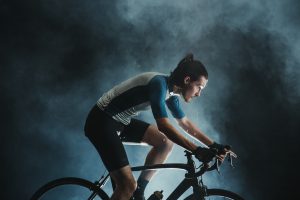1st International Short School on Smart Materials for opto-electronic Applications
7th and 8th of September 2021, free online event
Summary
Human evolution is linked to the manipulation of the environment. Since the first hominid to use a stone as a tool — or a bone according to the iconic scene from 2001: A Space Odyssey —, we have come to recognize this as materials science. This discipline uses physics, chemistry and engineering to study how materials are formed and what their physical properties are, as well as to discover and develop new materials, such as smart materials in order to find new uses applicable to any sector.

WHAT ARE SMART MATERIALS?
Smart materials are materials that are manipulated to respond in a controllable and reversible way, modifying some of their properties as a result of external stimuli such as certain mechanical stress or a certain temperature, among others. Because of their responsiveness, smart materials are also known as responsive materials. These are usually translated as “active” materials although it would be more accurate to say “reactive” materials. For example, we can talk about sportswear with ventilation valves that react to temperature and humidity by opening when the wearer breaks out in a sweat and closing when the body cools down, about buildings that adapt to atmospheric conditions such as wind, heat or rain, or about drugs that are released into the bloodstream as soon as a viral infection is detected.
One of the goal of this International School is to disseminate the scientific achievements of the European project PULSE-COM: Photo-Piezo-ActUators based on Light SEnsitive COMposite (https://www.pulsecom-h2020.eu/). The project concerns a new type of piezoelectric actuators (PZL) controlled by light using low-cost photo-mobile films (PMP) whose movement is induced and controlled by sunlight and/or artificial light. The patent aims to create a new class of photoactivable devices that could potentially change the current paradigms in the field of optoelectronic and piezoelectric devices by creating innovative devices for a wide range of applications. The main objective of this project is to study, simulate, fabricate and characterize actuators, sensors & harvesters that can be driven by light operating in the UV, VIS and NIR range to realize components and devices with different industrial goals. The project targets a novel and ambitious science and technological breakthrough as a first proof of concept in the new field of photo-activated piezoelectricity.
Program
The main scope of this International School is to provide in a short time of only two-days and full-immersion modality a rapid training on 6 different advanced technologies (FOCUS SESSIONS), namely:
1. Piezo-electric Materials
– Piezoelectric nanocomposites based on piezoelectric semiconducting nanowires (Gustavo Ardila, Grenoble Alpes University UGA)
– Exploration of materials properties and new materials discovery through atomistic simulation (Mateusz Wlazło, Centrum Badań i Rozwoju Technologii dla Przemysłu S.A. Research and Development Center of Technology for Industry- CBRTP Polonia)
2. Photo-active Materials
– Synthesis and characterization of liquid crystal based photomobile polymers (Domenico Sagnelli, CNR)
– Surface functionalization of smart materials (Ambra Vestri, CNR)
– How to play with DNA and myelin with light? (Katarzyna Matczyszyn, Advanced Materials Engineering and Modelling Group, Faculty of Chemistry, Wroclaw University of Science and Technology)
– Photosensitive self-assembled photonic crystals: heliconical cholesterics (Francesco Simoni, Guest Researcher at Polytechnic University of Marche – Ancona, Italy (as Retired Full Professor))
3. Nano-fabrication by top down and bottom up approaches: Electron Beam Lithography and Colloidal Lithography
– New functionalities for PMP materials: silver plasmonic films; opal and inverse opal synthesis; laser patterning (Bogdan Sava, National Institute of Plasma, Radiation and Lasers Physics – INFLPR Romania)
– “Man-made” Cutting Edge Materials for Light Control and Manipulation at the Nanoscale (Lucia Petti, CNR)
4. Advanced printing technologies & additive manufacturing
– 3D Bioprinting of Hybrid Materials for Regenerative Medicine (Dumitru Ulieru, SITEX 45 Romania)
– Gravure Printing for functional layer production (Maria Montanino, SSPT-PROMAS-NANO ENEA)
– Inkjet printed functional layers up to complete devices: characterization analyses and applications (Fulvia Villani, SSPT-PROMAS-NANO ENEA)
5. Characterization techniques and their implementation in Smart Materials and devices
– Organic materials for flexible electronics: impedance measurements and device limits (Giuseppe Nenna, ENEA)
– Design and Characterizations of 2D Plasmonic Nanostructures (Massimo Rippa, CNR)
– Functionalization approaches for 2D plasmonic devices (Valentina Marchesano, CNR)
6. Application of Smart Materials
– Nanocomposite and nanostructure: a way to coupling the light (Giuseppe Nenna, SSPT-PROMAS-NANO ENEA)
– Energy harvesting in the context of unprecedented IoT growth (Maciej Haras, CEZAMAT Polonia)
– Smart materials for innovative actuators (Jolan Gauthier, CTEC France)
– 2D Photonic Crystals on OF`s/PMP for wavelength selection application (Dumitru Ulieru, SITEX 45)
The school is mainly reserved for PhD, MSc students and postdocs, but also researchers from any branch of science who wish to increase their knowledge and awareness about Smart Materials, micro and nanotechnologies are very welcome.
The aim is to bring to the attendees the concepts and basic working principles of the above Smart Materials Technologies from experts in the fields coming from both Academy and industries. Moreover, lectures will be given for addressing complete understanding of how the Smart Materials have been exploited for achieving recent significant results in groundbreaking research of the FET project PULSE-COM as well as in applied sciences by investigators
working in the PULSE-COM Consortium.
The school is directed by PULSE-COM Team Leaders who are responsible for the facilities and for the related research topics.
Registration
To register to this free online event, please send an email to Valentina.marchesano@isasi.cnr.it with your contact information before the 3rd of September

